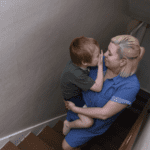With all the terrible disasters the past two weeks, I felt it was time to publish information concerning important things to do and to understand following a disaster. Unfortunately, there are many scammers preying on disaster survivors. Let’s make sure none of us or any of our friends suffer because of a lack of knowledge. Please share.
Information Needed Following a Disaster:
Be prepared for dealing with FEMA and Insurance Companies
Gather Now:
- Personal Identification, such as a driver’s license or passport with your address, not a post office box.
- Social Security number and card.
- Address of the location where the damage occurred (pre-disaster address).
- Proof of occupancy at the above address (utility bill, mortgage or lease).
- Proof of home ownership (Title, mortgage, tax receipts).
- Proof of ownership car, boat, RV etc.
- Current address, where you are staying while you are evacuated or waiting for your home to be repaired or rebuilt.
- Current telephone number and email. If you do not have any of these, arrange with a family member or friend to use theirs.
- Insurance information, including how much the insurance will or will not cover (even if you don’t know what the settlement from the insurance will be, begin the process).
- Proof of total household annual income.
- Routing and account number of your checking or savings account (this allows FEMA to directly transfer disaster assistance funds into your bank account)
- A description of your disaster-caused damage and losses (before and after photos really help)
After a Disaster Be Aware: Don’t Fall Victim to a Scam
FEMA and other agencies will NEVER:
- Ask for money.
- Ask for credit card information.
- Will never determine your eligibility.
- Take the place of an insurance inspector. Never begin clean-up without written permission from an insurance inspector.
- Never charge. FEMA inspections are free. Never pay an inspector.
Ask These Questions:
- Ask for official identification from insurance officials.
- Ask for official identification from FEMA officials.
- Ask for official identification from all agencies and first responders approaching you.
- Always record the names of officials you speak with and the time and date of the interaction.
- Do not sign anything for the first few weeks.
- Read through your policy and understand your rights and limitations. Ask for explanations.
- Get answers to all questions in writing.
- When turning in documents or receipts, get a receipt.
- You should receive a check for annual living expenses. This will be for an amount over what you were spending before the disaster. Be sure to include, rent storage fees, food, medications, clothing, laundry, and other expenses when submitting a claim for living expenses.
- If staying with family or friends, they are entitled to the added expenses for housing you.
- Keep a log of every phone call and the name of the person you spoke with.
- Create a list of items lost in the disaster. Walking through department stores reminds you of what you had buried in the closets and cupboards.
- Get everyone involved in the inventory registry. This would be a good assignment for children. Ask them to make a list of everything they can remember in your home by room. Transfer all lists to a master list, another great task for an older child.
- Ask friends and family about gifts they have given you, and ask for photos taken in your home, even if they are 20 years old.
- DO NOT discontinue your insurance policy. You are insured for liability and people may get hurt, including you, while cleaning up or rebuilding. Amend your policy but do not cancel.
- Do not clean up until after an insurance company and FEMA inspection if you are applying for help from FEMA.
- Be sure your insurance agent has all your contact information, including your new, temporary address.
- Do not close your claim too soon. Once a claim is closed, it’s closed. Be absolutely sure you have included everything you own and have been compensated for everything you are entitled to.
- If you receive a check marked with something like “payment in full” or payment closes claim do not cash it unless you are certain you are ready to close your claim.
- It’s ok to be the squeaky wheel, but be kind. You catch more flies with honey.
- Remember, you will only receive depreciation value on items so think of every safety pin and doorknob, everything!
Create a binder and include the following:
- Print all emails, both those you send and those you receive, and file them.
- All the lists of items you and the children have made of items lost in the disaster. Walk through department stores to remind yourself of what you had buried in the closets and cupboards. List all items that were in the yard. This list will need to include a brief description, original cost and year purchased.
- A list of purchases you make to replace items lost, and the receipts.
- A list of the cost of all items needing to be replaced.
- To prove replacement costs, go to a few stores and create a registry as you would for a wedding. Print the registry and include in your binder.
- All receipts for housing and living expenses while evacuated and rebuilding.
- All permits and receipts.
- Photos from home inventory or any photos from friends and family showing items you owned both inside and outside your home.
- Pictures before cleaning up.
- Photos during every phase of building.
We all hope and pray we will never need this information, but we have seen disasters in places never expected in the past few years. Did you know every state has experienced tornadoes, firestorms, flash floods, and earthquakes? Yes, disasters happen everywhere. Don’t be caught unprepared.


















